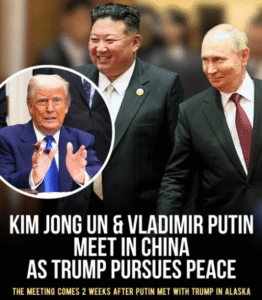The Peacemaker Claim: How Many Wars Has Trump Really Ended in His Second Term?
Since returning to the White House in January 2025, President Donald Trump has repeatedly claimed he’s ended six—sometimes seven—wars. At rallies, press briefings, and interviews, he’s leaned into the narrative of being a global peacemaker, even suggesting he deserves the Nobel Peace Prize. “I’ve stopped seven wars, and they were big ones too,” he said in August, adding, “Some people say six, but there’s one nobody knows about”.
So what’s the truth behind the claim?
Let’s break it down.
🧭 The Seven Conflicts Trump Claims to Have Ended
According to the White House, the seven conflicts Trump references are:
- Israel and Iran
- India and Pakistan
- Armenia and Azerbaijan
- Thailand and Cambodia
- Egypt and Ethiopia
- Serbia and Kosovo
- Rwanda and the Democratic Republic of Congo
Each of these conflicts has a unique history, and Trump’s role in resolving them varies widely—from direct diplomatic intervention to economic pressure, and in some cases, minimal involvement.
Let’s look at each one.
1. 🇮🇱 Israel and 🇮🇷 Iran
This was arguably the most high-profile of the seven. After Israel attacked Iran’s nuclear facilities in June 2025, a 12-day conflict erupted, resulting in hundreds of casualties. Trump claimed credit for brokering a ceasefire, using U.S. airstrikes and diplomatic pressure on Israeli Prime Minister Benjamin Netanyahu to halt further escalation.
Foreign policy experts, including Michael O’Hanlon of the Brookings Institution, acknowledged Trump’s role: “He managed to use a combination of a good relationship with Netanyahu, but also a willingness to put a little pressure on Netanyahu that I think contributed to the at least temporary cessation of hostilities”.
Verdict: Credible involvement. Ceasefire achieved.
2. 🇮🇳 India and 🇵🇰 Pakistan
In May 2025, India and Pakistan agreed to a ceasefire after days of military strikes over Kashmir. Trump claimed his administration used trade tariffs and backchannel diplomacy to pressure both sides into standing down.
However, Indian officials publicly disputed Trump’s involvement, stating the ceasefire was brokered independently. Still, U.S. diplomats were reportedly active behind the scenes.
Verdict: Disputed involvement. Ceasefire in place.
3. 🇦🇲 Armenia and 🇦🇿 Azerbaijan
After years of tension over Nagorno-Karabakh, Trump’s administration helped broker a peace agreement in early 2025. The deal included demilitarized zones and joint economic development projects. Both countries credited U.S. mediation as a key factor.
Verdict: Confirmed involvement. Peace agreement signed.
4. 🇹🇭 Thailand and 🇰🇭 Cambodia
Border skirmishes between Thailand and Cambodia had flared sporadically for years. In March 2025, Trump’s team facilitated a summit in Bangkok, resulting in a formal ceasefire and a joint cultural preservation initiative for disputed temple sites.
Verdict: Confirmed involvement. Ceasefire achieved.
5. 🇪🇬 Egypt and 🇪🇹 Ethiopia
This conflict centers on the Grand Ethiopian Renaissance Dam and water rights along the Nile. Trump claimed he used economic pressure and trade threats to bring both sides to the negotiating table.
However, no formal peace deal has been signed. Talks are ongoing, and tensions remain.
Verdict: No resolution yet. Talks in progress.
6. 🇷🇸 Serbia and 🇽🇰 Kosovo
Trump cited his administration’s role in cooling tensions between Serbia and Kosovo, but experts say there’s little evidence of direct U.S. involvement. The EU has led most of the negotiations, and no major conflict was underway at the time.
Verdict: Minimal involvement. No active war to end.
7. 🇷🇼 Rwanda and 🇨🇩 Democratic Republic of Congo
Trump claimed credit for a temporary ceasefire between Rwanda and the DRC, citing trade leverage and diplomatic pressure. While fighting did pause in early 2025, experts say the peace is fragile and the U.S. role was limited.
Verdict: Temporary ceasefire. Fragile peace.
🧠 The Politics of Peace
Trump’s framing of these events as “wars ended” is politically potent—but not always accurate. Some of the conflicts were low-intensity disputes. Others were already in negotiation before Trump’s second term began. And in several cases, hostilities have resumed or remain unresolved.
Still, the administration argues that Trump’s aggressive use of tariffs, military deterrence, and personal diplomacy helped cool tensions in regions where the U.S. has strategic interests.
Supporters call him the “peacemaker-in-chief.” Critics say the claims are exaggerated.
The truth, as usual, lies somewhere in between.
🕊️ The Nobel Peace Prize Campaign
Trump’s push for recognition isn’t new. He’s long sought the Nobel Peace Prize, citing his work with North Korea, the Abraham Accords, and now these seven conflicts.
In August 2025, he met with Ukrainian President Volodymyr Zelenskyy and claimed he was close to ending the Russia-Ukraine war as well. “This one, I think we’re going to get solved also,” he said.
The Nobel Committee is expected to announce the 2025 laureate next month. Whether Trump’s record will earn him the prize remains to be seen.
💡 What We Learn
From Trump’s second-term peace claims, we learn that diplomacy is rarely black and white. That “ending a war” can mean brokering a ceasefire, facilitating talks, or simply applying pressure. That political narratives often stretch the truth—but they also reflect real efforts.
We learn that peace is fragile. That some agreements hold, while others falter. That the role of the U.S. president in global conflict is both powerful and limited.
And we learn that in an age of spectacle, even peace can be a performance.


